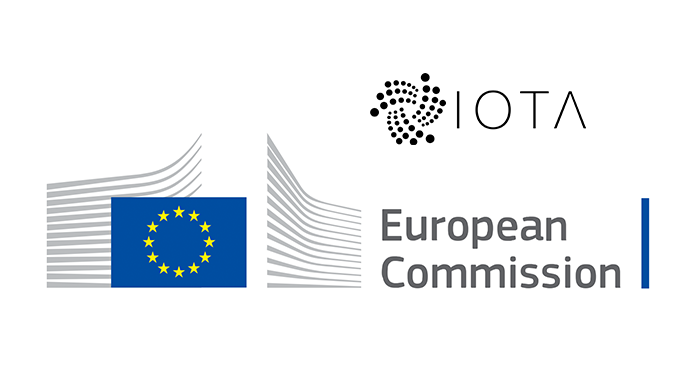
The EU is working to develop its own new blockchain solutions through the EBSI project. IOTA has now been successful in the selection of EBSI project partners for the final phase. However, there is also criticism.
At the end of 2020, the EU launched its EBSI (European Blockchain Services Infrastructure) project with the aim of developing practical blockchain solutions for use cases in public administration or climate protection, for example. The IOTA Foundation has been involved from the beginning and is now happy to be one of the three project partners out of the original seven to complete EBSI in the final phase 2B. Via Twitter, IOTA draws attention to a corresponding communication from the EU Commission. Earlier this year, the IOTA Foundation had summarized its experience with EBSI and had just hoped to work on the project until its completion.
However, skepticism is mixed in with the jubilation, for example, of IOTA boss Dominik Schiener about the decision. IOTA critic “Buffy“, for example, notes that in her view Schiener is lying when he praises IOTA as a decentralized network. Other commentators also ask when an IOTA 2.0 will really be launched, with which the central coordinator is to be abolished. In fact, the IOTA Foundation had always held out the prospect of solutions based on a decentralized IOTA 2.0 in connection with EBSI.
As things stand, however, IOTA will now enter the final phase of EBSI with its existing centralized Tanglenet. For the EU’s intended use cases, a central coordinator in the network may even be desirable because it allows intervention in validation processes at any time. In the crypto scene, however, such a structure is frowned upon because it requires basic trust in the organizers and, strictly speaking, can no longer be classified as a blockchain.
Conclusion: IOTA hopes for EU-wide use cases via EBSI
The bottom line is that blockchain solutions for official use cases in the EU will have to be measured by whether they are adopted by citizens and other target groups. In this regard, a central authority may be less of a deterrent for many than for a smaller group of crypto-maximalists. The remaining EBSI project partners IOTA (Germany), Chromaway (Sweden) and Billon (Poland) should now have 12 months to complete application-ready modules and test them extensively. So it is quite possible that in the future we will use digital versions of vaccination certificates or study certificates, for example, whose validity can be queried via an EBSI solution. If the name IOTA then also plays a visible role, this should help the ecosystem to become better known.
On the other hand, it is still true for IOTA and the Shimmer side project (SMR) within the crypto industry that monetary use cases such as decentralized finance (DeFi) have no real chances with a centralized network as a substructure, and the abolition of the coordinator in Tanglenet (“Coordicide”), which has been promised for years, will remain a decisive factor for market opportunities here.

Leave a Reply